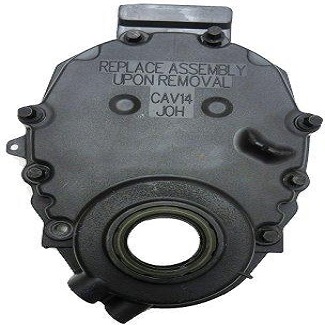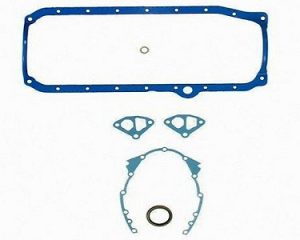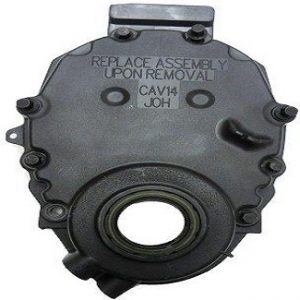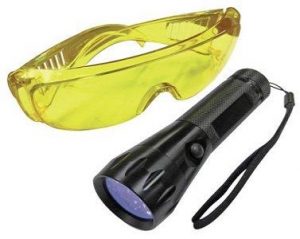

Unfortunately, car oil leak problems remain an issue on modern automobiles. We love our cars, but we hate when they make a mess out of our garage and driveway’s. I’m always surprised when I see a ten-year old automobile leaking oil like a 1970 Chevrolet Chevelle with a 350 cubic inch engine. Despite the efforts of car manufacturers to provide better sealing technologies, car oil leak problems continue on specific models.
When gaskets switched over from cork and paper to composite fiber materials that get their strength from blending multiple materials together, I thought we might see the end of automotive oil leaks. When General Motors started using permanent life valve cover gaskets made with thick, bright orange, rubber silicone, I thought for sure, this time we have the oil leak problem whipped.
As we entered the last decade we began to see a major shift in engine design and manufacturing. Engines are now manufactured using modular designs. This is the process of constructing larger integrated parts that require fewer gaskets during assembly. In addition, the modular design uses many of the same exact parts across many different engine sizes. This standardization and reduction of sealing surfaces would certainly put an end to car oil leak problems. Sadly, the oil leaks continue. Here we’ll discuss why this is true and some techniques for hunting down hard-to-find engine oil leaks.
Common Car Oil Leak Problems

As I mentioned in the opening, car makers have made a lot of changes that should stem the tide of car oil leak problems. However, at the same time they improved the gasket materials and reduce the number of sealing surfaces they started making more engine parts out of plastic material. They put the engine designers into a situation where they needed to reduce the total weight of the vehicle.
Car companies needed to meet rising corporate average fuel economy numbers. Automotive consumers wanted better fuel economy coupled with increased performance. Finally, manufacturers needed to reduce the cost per vehicle. Only one material seemed ready to tackle every category on the wish list. Plastic is cheaper and lighter than metal. Although they designed these specialized plastics to withstand the heat, they often become the source of car oil leak problems.
As a professional mechanic I can tell you, when I find an engine oil leak it is often from a plastic part. An excellent example of this becomes the engine timing cover. They use to make these out of stamped steel or aluminum just 10 years ago. Oil leaks remain difficult to find and we will cover this procedure in the next section. However, do-it-yourself mechanics should pay special attention to plastic engine parts that use gaskets or silicone to hold the oil inside the engine.
Locating Engine Oil Leaks
As I mentioned in the previous section some car oil leak problems become very challenging to find. However, let’s start off with the ones that aren’t so hard to locate. Obviously, you generally want to look to the highest point of wetness as the source of the oil leak. Since gravity pulls the oil down, upon first inspection it looks like the oil leak is coming from everywhere. A common example of this scenario is a valve cover leak.

Unfortunately, sometimes the leaking engine oil drips onto a pulley that’s rotating at 5000 RPMs. In this scenario it slings the oil throughout the engine compartment. Now we can no longer use the highest point of wetness in the diagnostic process. There are two ways to attack an engine oil leak like this. The first one is to completely steam clean the engine until it is completely free of oil and then dry. Then you run the engine and inspect for the leak after a short run time.
With that said, an even better way to tackle this type of oil leak is the use of a dye and black light system. This is when you install a florescent engine dye in the oil. After running the engine and taking the vehicle for a ride, the fluorescent dye becomes completely mixed with the oil. When the oil leaks out so does the fluorescent dye. Using a special black light and a yellow pair of glasses you can see a trail of fluorescent dye leaking from the source or root cause of the engine oil leak.
Repeat Car Oil Leak Problems

In some cases do-it-yourself mechanics might run into a situation where they locate and repair an oil leak only to have it return short time later. In this scenario we will have to consider a few possibilities. Whenever you are resealing an engine cover of any kind it needs to be checked for warping. You should use a precision straight edge with a feeler gauge to verify the part hasn’t warped. Again this remains critical when dealing with a plastic engine cover. It’s almost impossible to see a slight amount of warp with the human eye.
There remains another possibility of why the gasket would start to leak from the same area. The automotive engine develops a small amount of pressure inside from the combustion process. Mechanics call this engine blow by. Car engineers deployed a system to relieve this internal pressure. All automobiles have some kind of positive crankcase ventilation. Twenty years ago they modulated this ventilation using a PCV valve.
However, on modern cars you often find a small tube running from the top of the valve cover to the air intake hose. This uses a Venturi effect to relieve the internal pressure from the engine. If this hose or plastic tube develops a crack or leak, venting becomes incomplete and crankcase gases build up. This internal pressure will look for the path of least resistance to find its way out of the engine. In other words, the engine blow bye physically pushes out on the gaskets in between the sealing surfaces. This type of failure is called a blown out gasket.




